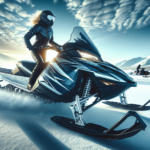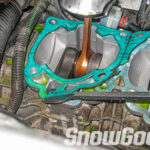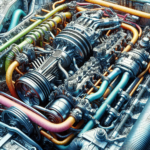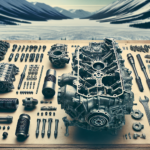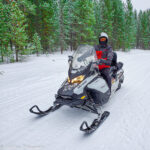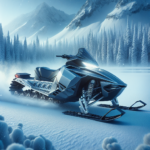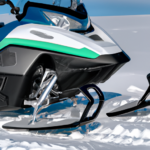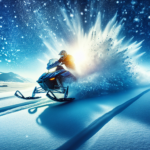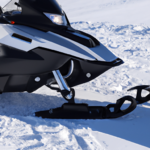Imagine the thrill of zipping across the snow at neck-breaking speed, with nothing but the hum of a powerful engine to keep you company. That’s the magic of snowmobiling, a favorite winter sport for adrenaline junkies across the globe. In the spotlight of this article is the question you all have been asking: What’s the fastest production snowmobile? Without further ado, let’s discover the details and unveil this snowy speedster.
Understanding Snowmobile Specifications
Before we dive into the world of the fastest production snowmobile, it’s crucial to understand various specifications and how they impact performance. A grasp of these terms not only provides valuable insights but also creates an informed snowmobile enthusiast or potential buyer.
Defining ‘Production Snowmobile’
Understanding what a production snowmobile means is the first step. A production snowmobile is a snowmobile model that is mass-produced and sold to the public. It’s not a custom or prototype snowmobile, but a standard model available for purchase by any consumer. These models are subject to regulations and standards set by governing bodies, designed for both performance and safety.
How Top Speed is Determined
Top speed is the maximum speed a snowmobile can attain on ideal conditions. It depends on several factors like engine size, horsepower, snowmobile’s weight, aerodynamics, track design, and even the skill level of the rider. These variables play a significant role in determining the top speed of a snowmobile.
Other Performance Factors to Consider
Besides top speed, other factors contribute to the overall performance of a snowmobile. These include acceleration (how swiftly it reaches top speed), maneuverability (how well it can navigate through obstacles), and traction (how effectively it can apply power to move over the snow). Stability and reliability are also important considerations.
Historical Fastest Production Snowmobiles
Now that we understand the basic specifications let’s shift gears and take a peek into the history of the fastest snowmobiles.
Fastest Snowmobiles in the 90s
The 90s was a decade of innovation and competition among manufacturers. During this era, Ski-Doo’s Mach Z held the crown for the fastest production snowmobile, clocking in top speeds over 115mph.
Legacy Speed Champions: Early 2000’s Models
The early 2000s continued to see advancements in engine technology and aerodynamics. Arctic Cat’s Z1 Turbo, with its 177hp turbocharged engine, was the most awe-inspiring model of this decade, boasting top speeds of around 124mph.
Landmarks in Snowmobile Speed Development
Notable milestones include the introduction of fuel injection, enhancing fuel efficiency and reliability. Arctic Cat’s introduction of the first factory produced 2-stroke, turbocharged snowmobile was a major leap in speed development.
Current Fastest Production Snowmobile: Overview
In the quest for the title of the fastest production snowmobile, the Arctic Cat Thundercat 9000 currently holds the trophy.
Manufacturer and Model
The Arctic Cat Thundercat 9000 has been crafted by the renowned manufacturer, Arctic Cat. They have a long history of delivering high-performance snowmobiles, and this model is no different.
Top Recorded Speed and Conditions
The Thundercat 9000 holds the bragging rights for the highest recorded speed of over 137mph. These speeds were achieved under ideal conditions – flat terrain, optimal snow conditions and a highly skilled rider.
Proprietary Technology Contributing to Speed
The phenomenal speed of the Thundercat 9000 can be attributed to its 998cc C-TEC4 turbocharged engine. Coupled with its state-of-the-art cooling system and slender design, it offers unparalleled speed and performance.
Comparing the Fastest Production Snowmobiles
Understanding the differences between various fastest snowmobiles provides valuable insights and can guide buying decisions.
Comparison by Manufacturer
The title for the fastest snowmobile has been held by several manufacturers over the years. While Arctic Cat holds the current title, brands like Ski-Doo and Yamaha have also produced some remarkably fast models.
Comparison by Top Speed
While Arctic Cat’s Thundercat 9000 is the fastest with 137mph, others are not far behind. Ski-Doo’s MXZ X 850 E-TEC, for instance, can reach speeds of 125mph, while Yamaha’s Sidewinder can clock in at around 114mph.
Comparison by Engine Type
The engine type plays a significant role in a snowmobile’s speed. While 4-stroke engines provide more torque and smoother operation, 2-stroke engines typically deliver higher horsepower-to-weight ratio, making them ideal for speed.
Comparison by Year of Production
Newer models generally feature advancements in engine technology and design, making them faster than their predecessors. However, some older models have earned legendary status for their competitiveness.
Engine Technology of Fastest Snowmobile
The engine, being the heart of the snowmobile, significantly contributes to its speed and performance.
Engine Type and Size
The Thundercat 9000 features a 998cc turbocharged 4-stroke engine. The large engine displacement coupled with turbocharging results in incredible raw power.
Role of Turbocharging
Turbocharging boosts engine power by forcing more air into the combustion chamber, allowing the engine to burn more fuel and produce more power. This technology lets the Thundercat 9000 unleash mind-boggling speeds.
Effects of Fuel Injection Systems
Fuel injection ensures precise control over the fuel-air mixture entering the engine, leading to more efficient combustion and power output. It also improves start-up, idling and throttle response.
Role of Cooling Systems
High performance means more heat generation. Therefore, efficient cooling systems are crucial to maintain optimal engine temperatures and prevent overheating, improving both performance and engine longevity.
Design and Aerodynamics
Aerodynamics and design significantly influence speed by reducing air resistance or drag when the snowmobile is in motion.
How Aerodynamics Influence Speed
A streamlined design allows the snowmobile to cut through the air with less resistance. So, the less drag a snowmobile faces, the faster it goes. Hence, the importance of aerodynamics in speed cannot be overstated.
Description of Fastest Snowmobile’s Design
The Thundercat 9000 boasts a sleek, aerodynamic design that minimizes drag. Its precise weight distribution provides excellent stability, while a low center of gravity enhances handling at high speeds.
Evolution of Aerodynamic Design in Snowmobiles
Over the years, the design of snowmobiles has evolved significantly, from bulky designs to sleek and aerodynamic ones. The focus has shifted towards creating designs that can slice through the air with ease.
The Role of Weight and Materials
Weight and the materials used in the construction of the snowmobile have a measurable effect on speed and handling.
How Weight Affects Speed
In general, lighter snowmobiles can achieve higher speeds as there’s less mass to move. They offer better acceleration and are easier to handle.
Materials Used in Fastest Snowmobile
The Thundercat 9000 frame is primarily made of aluminium alloys due to their strength-to-weight ratio. Other materials include high-strength steel and plastics for specific components.
Weight Reductions in Modern Snowmobile Design
Modern snowmobiles use advanced materials and innovative designs to shed weight without compromising strength or durability. This reduction enhances speed and performance.
Track Design and its Contribution Towards Speed
The track of a snowmobile plays a pivotal role in the overall performance and speed handling.
Effects of Track Length and Width
A longer track provides more traction but can slow down the snowmobile due to increased friction. Conversely, a shorter track reduces drag and is lighter, providing speed advantages.
Role of Track Material and Pattern
The material and pattern of the track contribute to the grip and durability. A more aggressive pattern provides better traction but might increase rolling resistance, thereby reducing speed.
Innovations in Track Design Over Years
Modern track designs have evolved to find the delicate balance between grip, durability, weight, and drag. Innovations include variable tooth designs, lightweight materials, and advanced manufacturing processes.
Safety Considerations for Fast Snowmobiles
As the speed of snowmobiles increases, so does the importance of safety.
Importance of Safety Equipment
Safety equipment such as helmets, eye protection, snowmobile suits, boots, and gloves are essential. They provide protection from the elements and possible accidents.
Handling Characteristics at High Speeds
As speeds increase, handling becomes more challenging. Understanding how snowmobiles behave at high speeds is critical to master control and enhance safety.
Risks Involved with Fast Snowmobiles and Minimisation Strategies
High-speed snowmobiling comes with inherent risks, such as collisions and loss of control. Strategies to minimize these risks include adequate training, regular maintenance, knowing your limits, and always respecting safety guidelines.
Future Trends in Snowmobile Speed and Design
The future of snowmobile speed and design appears exciting with new trends and innovations on the horizon.
Predicted Advancements in Engine Technology
Advancements in engine technology, such as supercharging, advanced fuel injection systems, and innovative cooling systems, are expected to push the limits of speed further than ever before.
Influence of Electric Engines on Future Designs
The emergence of electric engines presents untapped potential for snowmobile design. With their high torque, zero emissions, and lower maintenance, they could recreate the future of snowmobiles.
Potential Speed Limits and Regulations
As speeds continue to rise, more regulations may be placed to ensure safety. The consideration of potential speed limits becomes critical, since pushing the limits of speed should never compromise safety.
- What Snowboard Bindings Should I Get? - January 23, 2024
- What Size Screws For Snowboard Bindings? - January 23, 2024
- How To Snowmobile On Water? - January 23, 2024

